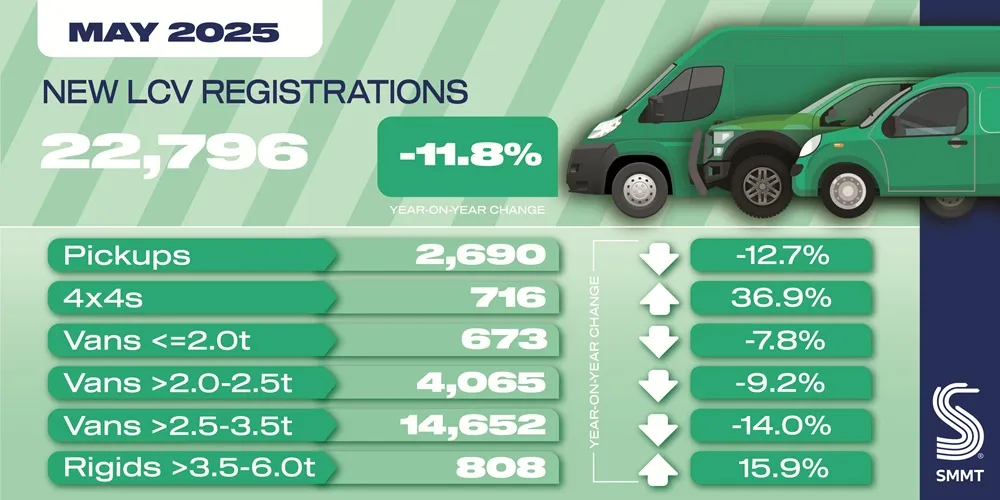Demand for new trucks grows for second year running as more businesses go green
UK HGV demand grows but still needs incentives for EVs
Demand for new heavy goods vehicles (HGVs) grew for the second year running with UK registrations up 13.5 per cent in 2023, according to the latest figures published today by the Society of Motor Manufacturers and Traders (SMMT). Some 46,227 new trucks of all types, sizes and technologies were put on the road last year, representing the best annual total since 2019 as more businesses invested in their fleets.
The bulk of new HGVs were rigid trucks, up 14.7 per cent to 24,439 units – more than half (52.9 per cent) of the market – while demand for articulated trucks was also strong, rising 12.2 p[er cent to 21,788 units. More specifically, the most popular truck body type continues to be tractors, typically used for the largest delivery trucks, up 12.4 per cent to represent some 46.4 per cent of the market. Demand for box vans – typically used for chilled and fragile goods distribution in urban areas – rose 19.2 per cent, while uptake of curtain-sided trucks and refuse vehicles increased by 37.4 per cent and 14.4 per cent respectively. Tipper registrations declined, however, down -9.2 per cent compared with a strong 2022.
Truck operators in every UK nation made more vehicle investments, with the vast majority (87.5 per cent) in England, rising by 13.3 per cent. Fleet renewal in Scotland and Wales also grew, by 16.9 per cent and 6.5 per cent respectively, while Northern Ireland saw the biggest percentage growth, up 19.7 per cent – albeit with small volumes that are naturally subject to volatility. Britain’s biggest region for truck demand continues to be South East England, the location of several large ports, accounting for more than one in five (20.8 per cent) of all registrations. North West England and the West Midlands, meanwhile, made up 14.4 per cent and 12.1 per cent of all UK demand respectively. Robust demand nationwide means that UK uptake is now just 4.8 per cent or 2,308 units below pre-pandemic 2019 levels.
A growing choice of models also means operators are investing in new zero emission trucks, with electric and hydrogen registrations up more than threefold in 2023 – by 265.6 per cent to 234 units. While this is progress, these vehicles account for just 0.5 per cent of the market and the clock is ticking with the end of sale of new, non-zero emission trucks under 26 tonnes coming in 2035.
Operators need certainty that making the switch will be commercially viable against tight margins. The benefits are clear, including a reduced carbon footprint and more efficient operations, but there are acute concerns over the lack of public chargepoint infrastructure. After the UK’s first truck-dedicated public chargepoint opened in the North West last year, government’s Budget in less than three weeks must match ambition with action. A national chargepoint strategy needs to include support for HGVs – in depots, at rest stops and on motorways – in every part of the UK.
Meanwhile, with less than one full cycle of truck fleet renewal remaining before 2035, it is imperative that government sends the signal to the market that the shift to zero emission vehicles must accelerate. Businesses that fail to do so risk delaying the benefits of decarbonisation, putting a smooth, stable transition of the market in jeopardy.
Mike Hawes, SMMT Chief Executive, said; “Two years of growing demand for the very latest, fuel efficient trucks amid testing times reflects these vehicles’ importance to the British economy – and with some HGVs facing the same 2035 end of sale date as cars and vans, the sector is also critical to our green goals. Increasing availability of electric and hydrogen models – and record demand for them – is encouraging market growth but operators need cast-iron confidence to switch. More than ever, government must compel truck infrastructure rollout and provide a signal that the time to invest is now.”








